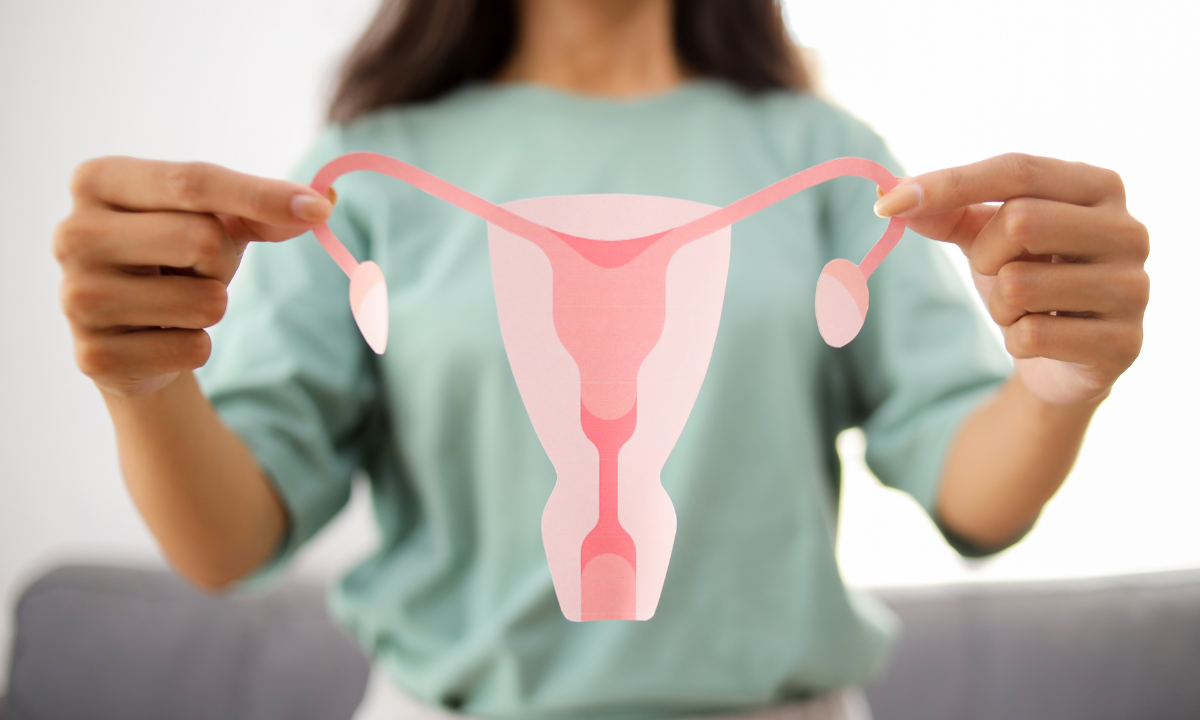Cervical cancer affects millions of women around the world, making it the fourth most common cancer in women. By learning about the different stages and what each stage means for symptoms, treatment, recovery, and the chance of coming back, women can feel more prepared, supported, and informed on their journey.
What is cervical cancer?
Cervical cancer is a type of cancer that starts in the cervix, which is the lower part of the uterus that connects to the vagina. It develops when healthy cells in the cervix begin to grow and multiply in an abnormal way.
In most cases, cervical cancer is linked to a long-term infection with high-risk strains of the human papillomavirus (HPV), a very common virus that most people will come into contact with at some point in their lives.
How cervical cancer stages are divided
Cervical cancer stages are classified using the FIGO system (International Federation of Gynaecology and Obstetrics), which considers the size of the tumour, depth of invasion, and how far the cancer has spread.
The stages range from stage I (cancer limited to the cervix) to stage IV (cancer that has spread to distant organs like the lungs or liver). Each stage is further divided into sub-stages (A, B, C) to provide more detail about the extent of the disease.
Staging also looks at whether the cancer has reached the lymphatic system, since this affects both treatment decisions and survival outcomes. Therefore, this cancer staging system helps doctors plan the most appropriate cancer treatment and estimate outcomes.
Early stages of cervical cancer

Stage 1A: Microscopic cancer
At stage 1A, which is the early stage of cervical cancer, the cancerous tumour is so small that it can only be seen under a microscope. These cancerous cells may grow less than 5mm deep in the tissue. As it is in an early stage, most women do not notice any symptoms. Treatment at this stage often involves a cone biopsy (removing a small, cone-shaped piece of tissue) or a simple hysterectomy (removal of the uterus).
Survival rate: Around 93% at five years
Recurrence risk: About 10%
Stage 1B: Visible but still contained cancer
In stage 1B, the tumour is large enough to be seen without a microscope, ranging from smaller than 2cm up to more than 4cm, but it is still limited to the cervix. Treatment usually involves a radical hysterectomy (removal of the uterus, cervix, and surrounding tissue) or chemoradiation, depending on the tumour size. Some women may experience early symptoms such as unusual vaginal bleeding or mild pelvic discomfort.
Survival rate: 80–90% for Stage 1B1/1B2, around 77% for Stage 1B3
Recurrence risk: About 15%
Local spread of cervical cancer

Stage 2A: Cancer spreading to the upper vagina
At stage 2A, the cancer extends into the upper part of the vagina but has not yet invaded the surrounding tissues. Symptoms often become more noticeable at this stage, such as heavier vaginal bleeding and increasing pelvic pain. Treatment usually involves a combination of surgery and radiation therapy, where possible.
Survival rate: Around 63–75%
Recurrence risk: About 20%
Stage 2B: Cancer spreading into nearby tissues
In Stage 2B, the cancer spreads deeper into the tissues around the cervix, but it still has not reached the pelvic wall. Symptoms may include persistent heavy bleeding and ongoing pelvic pain. At this stage, treatment typically shifts to chemoradiation (a combination of chemotherapy and radiation therapy).
Survival rate: Around 58–63%
Recurrence risk: About 25%
Advanced stages of cervical cancer
Stage 3A: Cancer spreading to the lower vagina
At Stage 3A, the cancer extends into the lower third of the vagina. Symptoms may become more severe, including heavier bleeding and urinary discomfort. Treatment usually involves combination therapy, such as radiation with chemotherapy.
Survival rate: Around 45–50%
Recurrence risk: About 30%
Stage 3B: Cancer reaching the pelvic wall or affecting kidneys
In Stage 3B, the cancer spreads to the pelvic wall or blocks the ureters, the tubes carrying urine from the kidneys to the bladder. This can lead to kidney problems, along with symptoms such as severe pelvic pain, difficulty urinating, and swelling in the legs. Treatment focuses on chemoradiation and managing kidney function.
Survival rate: Around 32%
Recurrence risk: 35–40%
Stage 3C: Cancer in the lymph nodes
Stage 3C means the cancer has reached the lymph nodes – either in the pelvis (3C1) or higher up near the aorta (3C2). Common symptoms include pelvic pain, leg swelling, and fatigue. Treatment usually involves chemoradiation.
Survival rate: 32–45%
Recurrence risk: 35–40%
Stage 4A: Cancer spreading to nearby organs
In Stage 4A, cervical cancer extends to nearby organs such as the bladder or rectum. Symptoms can include severe pelvic pain, heavy bleeding, and problems with urination or bowel movements. Treatment usually combines chemoradiation with palliative care to ease symptoms and improve quality of life.
Survival rate: Around 15–20%
Recurrence risk: About 50%
Stage 4B: Cancer spreading to distant organs
Stage 4B is the most advanced stage, where cancer has spread to distant parts of the body such as the lungs, liver, or bones. Symptoms often include severe pain, extreme fatigue, weight loss, and organ-related issues. At this point, treatment focuses on chemotherapy and palliative care, with the goal of improving comfort and quality of life.
Survival rate: Less than 10%
Recurrence risk: Over 50%
Advanced cervical cancer can feel overwhelming, but we are here to provide treatment options that support you during this trying time. If you would like to explore available treatments, you may request an appointment with our oncology specialists at Thomson Medical.
Doctors who can help diagnose cervical cancer
Loading...
Treatment at Thomson Medical
At Thomson Women's Clinic & Cancer Surgery, our women's cancer specialists understand that a cancer diagnosis can feel overwhelming. We specialise in comprehensive gynaecological cancer management, combining advanced treatment options with personalised, compassionate care.
During your care, you can expect:
- Thorough consultation to discuss your diagnosis and treatment options
- Detailed explanation of recommended treatments and expected outcomes
- Access to advanced treatment technologies and minimally invasive surgical techniques
- Clear information about managing side effects and recovery
- Coordination with oncologists, radiologists, and other specialists as needed
- Ongoing support during and after treatment, with regular monitoring
Prevention is equally important: We also offer a comprehensive 4-in-1 women's screening package that includes consultation, Pap smear, HPV test, and pelvic ultrasound – helping detect abnormalities early when treatment is most effective.
Cervical cancer treatment cost in Singapore
The cost of cervical cancer treatment in Singapore varies significantly depending on the stage of cancer, type of treatment required, and whether you choose public or private healthcare facilities.
Some of the procedures that help treat cervical cancer include:
- Laparoscopic surgery:
- Laparoscopic surgery costs are performed as day surgeries and range from SGD 7,200 to SGD 11,570, depending on whether you choose public or private hospitals.
- Colposcopy:
- The cost of a colposcopy ranges from about SGD 1,200 to SGD 10,400, depending on whether it is done as a day surgery or inpatient procedure.
Additional costs to consider
Beyond the primary treatment costs, you should budget for:
- Pre-treatment consultations and specialist visits
- Diagnostic tests including ThinPrep Pap test, Pap smears, HPV tests, colposcopy, and biopsies
- Imaging studies such as CT scans, MRI scans, or PET scans
- Laboratory tests and blood work
- Medications for managing side effects
- Post-treatment follow-up appointments and surveillance scans
- Rehabilitation or supportive care services
How does insurance work for cervical cancer treatment?
Knowing about insurance coverage for cervical cancer treatment can be complex, as different components may be covered differently:
- Doctor's fees:
- Each specialist has their own panel of insurance providers and coverage arrangements
- Procedures and scans:
- Some procedures like diagnostic imaging or certain surgical techniques may be subsidised by the Singapore government or covered under MediShield Life
- Overall treatment costs:
- Your total out-of-pocket expenses will depend on how your insurance plan covers both the doctor's professional fees and the hospital/procedure costs
Fortunately, there are several programmes in Singapore that can help lower the total cost, such as MediSave, MediShield Life, and Integrated Shield Plans. Each of these offers different levels of coverage depending on your eligibility and insurance arrangements.
This price was last updated in June 2025. Treatment costs may have changed since then. For current pricing, detailed insurance coverage information, and personalised financial guidance, contact our medical concierge team.
FAQ
What are the stages of cervical cancer?
Cervical cancer has four main stages, based on how far it has spread:
Stage I: Limited to the cervix
Stage II: Beyond the cervix but still within the pelvis
Stage III: Spread to the lower vagina, pelvic wall, or nearby lymph nodes
Stage IV: Spread to distant organs such as the bladder, rectum, lungs, or bones
What stage of cervical cancer do symptoms show?
Cervical cancer often causes no symptoms in the very early stages (Stage 1). Symptoms such as abnormal vaginal bleeding, pelvic pain, or pain during sex usually appear in later stages (Stage 2 onwards), when the cancer has spread beyond the cervix. This is why regular Pap smears and HPV tests are vital for early detection.
How is the stage of cervical cancer determined?
Doctors determine the stage using pelvic examinations, imaging tests (CT, MRI, and PET scans), and biopsies. These help assess the tumour’s size, whether it has spread within the pelvis, and if lymph nodes or distant organs are affected.
How quickly can cervical cancer progress?
Progression varies. Some cervical cancers develop slowly over many years, while others can advance more quickly. Regular screening is key to detecting precancerous changes early, before they become invasive.
How do you detect cervical cancer early?
Early detection is usually done through regular cervical cancer screening tests:
Pap smear: Checks for abnormal cell changes in the cervix.
HPV test: Detects high-risk HPV strains that can cause cervical cancer.
Colposcopy and biopsy: Follow-up tests if abnormalities are found.
Screening helps identify precancerous changes before they develop into cervical cancer, improving treatment outcomes.
Can cervical cancer remain undetected in the early stages?
Yes. Pre-cervical cancer often causes no noticeable symptoms. That’s why Pap smears and HPV testing are so important. Early detection greatly improves outcomes, with survival rates of up to 93% in Stage 1, compared to much lower rates in Stages 3 and 4.
Can recurrent cervical cancer be prevented?
While recurrence cannot be fully prevented, regular follow-up appointments after treatment and monitoring for new symptoms help detect it early, when more options may still be available.
The information provided is intended for general guidance only and should not be considered medical advice. For personalised recommendations and tailored advice based on your unique situations, please consult a specialist at Thomson Medical. Request an appointment with Thomson Medical today.
For more information, contact us:
Thomson Specialists (Women's Health)
Thomson Women's Clinic (TWC)
- Novena:
6592 6686 (Call), 8611 8986 (WA) - Bukit Batok:
6569 0668 (Call), 8686 3525 (WA) - Choa Chu Kang:
6893 1227 (Call), 8282 1796 (WA) Jurong:
6262 8588 (Call), 6262 8588 (WA)- Katong (female doctor):
6970 2272 (Call), 8611 9020 (WA) - Punggol:
6243 6843 (Call), 8811 0328 (WA) - Sembawang: 6753 5228
- Sengkang: 6388 8125
- Serangoon (female doctor): 6382 3313
- Tampines: 6857 6266
- Tiong Bahru: 6276 1525
Dr Wang Junjie
Obstetrics & Gynaecology (O&G)
Thomson Women's Clinic & Cancer Surgery
English, Mandarin
Prudential, Alliance MediNet


